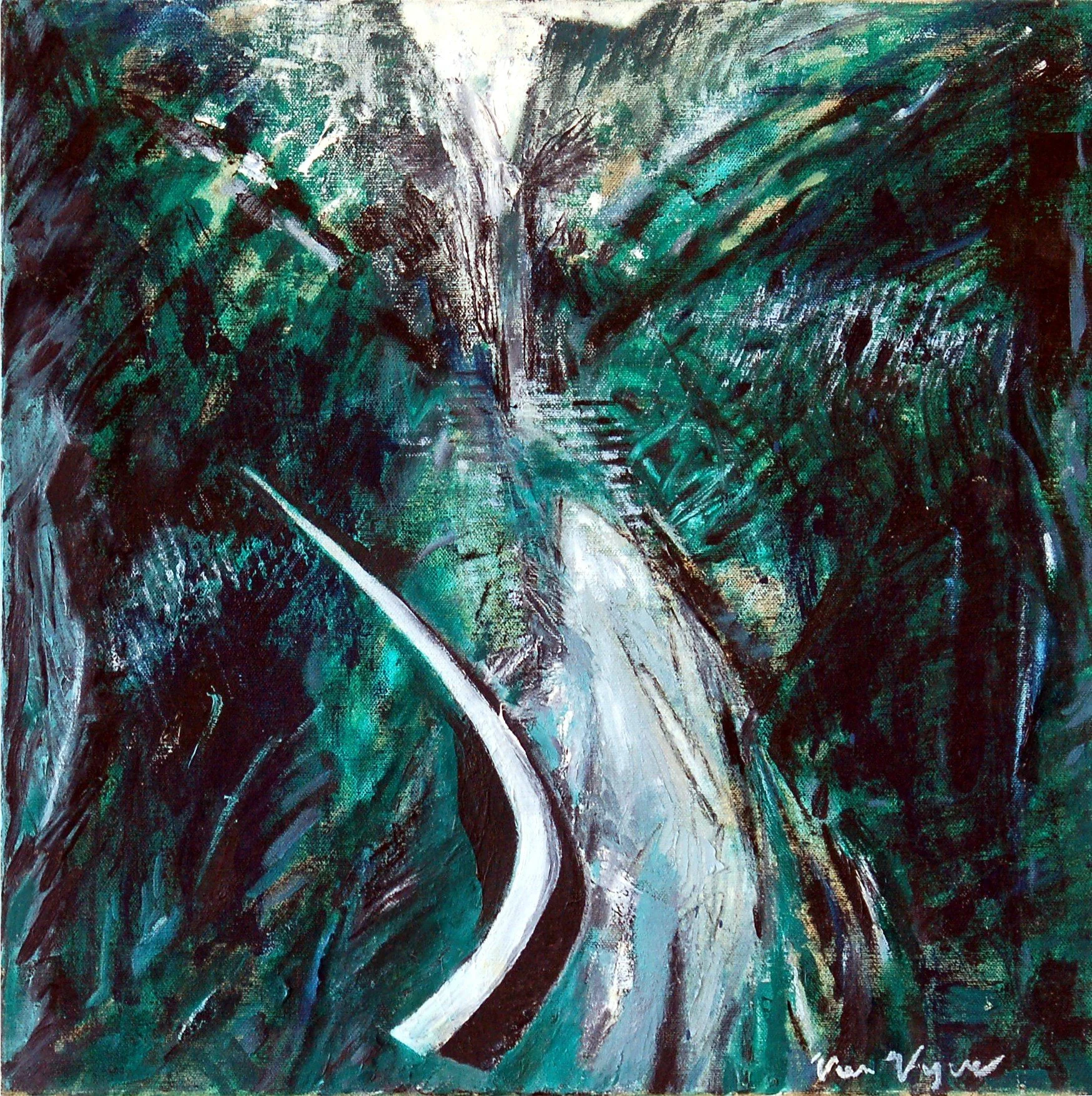Van Vyve’s paintings are firmly rooted in the European modernist tradition, with different stylistic phases marking the successive stages of her life.
A first important body of work dates from the late 1970s and consists of large figurative paintings featuring imposing female characters often portraying Van Vyve herself, sometimes with her daughter and her dog by her side. These early works refer openly to the art of Magritte, Courbet, Balthus, Beckmann and Friedrich and reveal Van Vyve as a storyteller. Replete with feminine regalia and symbols of motherhood and death, the paintings are a reflection of Van Vyve’s turbulent inner life and interest in Jungian analysis.
In the 1980s, Van Vyve continues to explore feminine themes, recording the adolescence of her daughter and producing a series of archetypal images of Eve and Persephone. But the iconographic and stylistic references fade into the background as her paintings become increasingly abstract and textural. Her last series, entirely devoted to trees, is shown at Galerie De Zwarte Panter in 1989. The Tree series reveals Van Vyve’s approach to painting as a healing process and her deep interest in Native American teachings. It is also a testimony to her longstanding love for nature and early concern for the environment.













